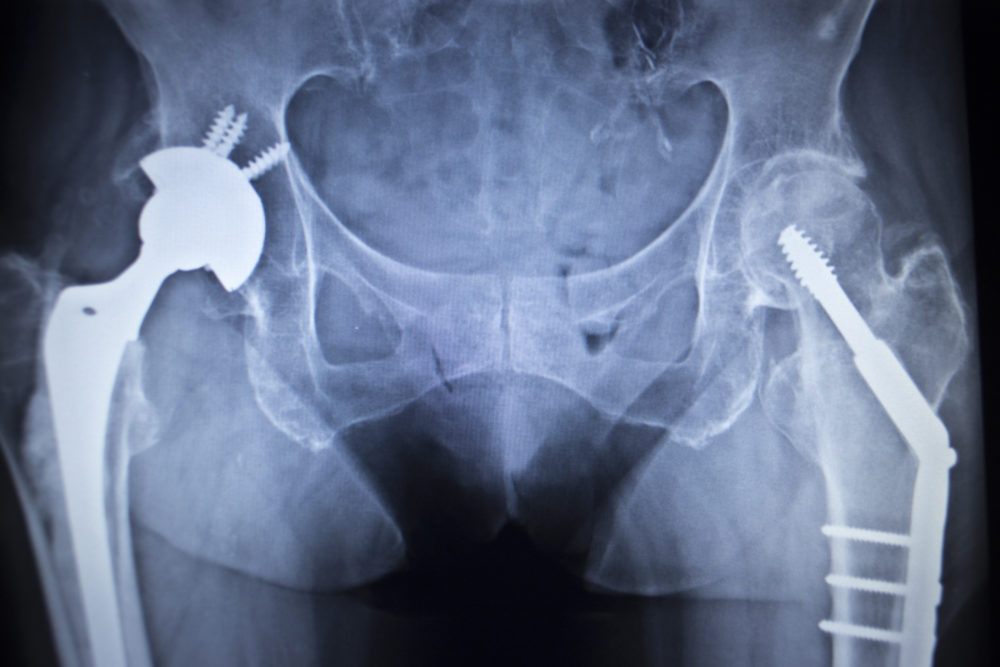Physical therapy is crucial for getting back on your feet after hip replacement surgery. The good news is Bacci & Glinn Physical Therapy specialize in hip replacement rehabilitation in Visalia and Hanford.
Hip Replacement or Hip Arthroplasty Can Alleviate Severe Pain But…
Hip replacements have consistently grown in popularity to become one of the most frequently performed orthopedic surgeries. Since first being introduced in 1960, the technique and the prosthesis used have been continually improved upon and perfected over time. All along, the goal has been to help patients recover more quickly and with less pain, so they can get back to doing the things they love.
Hip replacement surgery—which can be either partial or complete— is used to treat patients with severe osteoarthritis or a hip fracture after all other conservative (non-surgical) treatments have failed. The procedure removes damaged bone and cartilage from the painful hip and replaces it with a prosthetic, or artificial hip. If successful, the end result will relieve pain, improve joint mobility and restore or improve a patient’s ability to safely perform daily activities like walking, standing, and climbing stairs.
The surgery itself, however, is not the end of the story. In order to have a successful recovery, it’s incredibly important that the patient follows a course of physical therapy following the hip replacement. Physical therapy is a necessary component of the recovery process that will help patients regain their flexibility, build back their strength, and gradually return to everyday activities.
Highlights of hip arthroplasty rehabilitation in Visalia
In most cases, a physical therapist will come to the patient’s bedside on the first or second day after surgery to begin post-operative treatment. This period of time is called the acute phase of recovery, and the therapist will help you with tasks like turning in bed and rising to a sitting position, getting out of bed to stand, and walking with an assistive device like a walker or crutches a short distance. The therapists will also begin some gentle exercises to increase flexibility and strength at this time.
Some time after being discharged from the hospital, patients will begin an outpatient treatment program at a local clinic will begin. During this time, physical therapists will continue to focus on helping patients with walking and stair climbing, balance, full movement of the leg and new hip, and transferring to the bed, chair and car. They will also incorporate specific muscle strengthening to improve the patient’s ability to stand and walk safely and independently.
Sometimes a Good Home Program is All That is Needed
In some cases, our physical therapist may have enough confidence in a patient to prescribe an unsupervised rehabilitation program to be performed at home. While less capable patients may require the specific guidance of a physical therapist at the clinic, a recent study has shown that both supervised and unsupervised treatment programs can lead to similar results after surgery:
The results demonstrated that outcomes in response to rehabilitation after hip total replacement surgery are clinically and statistically similar whether the program was supervised or not. The results suggest that early rehabilitation programs can be effectively delivered unsupervised in the home to low-risk patients discharged home after surgery.
Patients who are scheduled to have a hip replacement surgery are therefore encouraged to confirm that physical therapy is part of their recovery plan, and to participate in it fully in order to experience the best possible outcomes.
When a Home Program Isn’t Enough – Give Us a Call
If the home program isn’t enough to get you back to walking normally or you don’t have good pain relief after the procedure, then total hip replacement physical therapy program may be for you. Contact us for additional information and details. We accept most insurance plans and can usually get you in within a few days.

